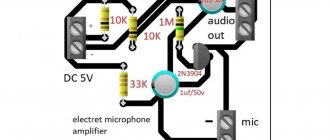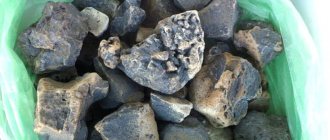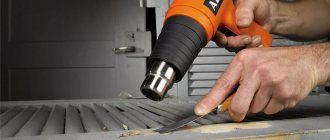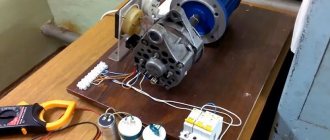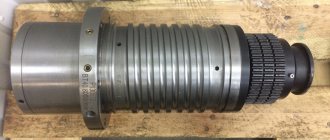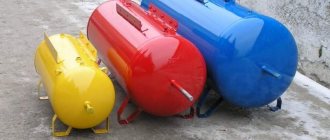Soldering galvanized iron at home: tips from professionals
Soldering galvanized iron requires a specific approach to the process. Flux is required for this. This substance is both a solvent and an oxidizing agent. Additionally, this substance allows the metal to be wetted with iron, so you can get a high-quality seam. Most often, rosin or hydrochloric acid is used as a flux for working with galvanized parts or products at home. In some cases, it is possible to use boric acid or zinc chloride.
When is galvanized metal suitable for soldering?
To correctly solve the question of how to solder galvanized steel, it is necessary to consider some of the properties of zinc. This metal begins to melt at a temperature of +460 o C. And at a temperature of +960 o C it begins to evaporate. Above these temperature values, pores, cracks and solder joint defects begin to form in the material. Therefore, the procedure can be carried out only with lower rates. An alternative is to use filler wire. In industrial conditions, the procedure in this case is carried out in a protective gas environment. Wire containing copper with silicon, bronze and aluminum is more often used.
These materials provide the following advantages:
- the welding seam is protected from corrosion;
- Spattering during soldering is minimal;
- the coating fades slightly;
- the procedure requires low heat levels;
- processing the formed seam is simple;
- Natural cathodic protection is formed in the weld area.
Solder for household work, its composition and properties
Solders are usually classified into hard and soft. For soldering galvanized steel at home, only the second group is used. If you use hard solders, it is not only impossible to achieve a high-quality weld, but there is also a risk of warping of the galvanized iron products themselves. Filler materials must have a low melting point, the point should be lower than that of the base material. Most often, POS-30 solder is used at home; it is a tin-based substance. It is better to use zinc chloride as a flux. If the surfaces have been tinned in advance, then rosin can be used. POS 30 is characterized by the following properties:
- optimal fluidity, materials penetrate into all spaces, filling even small voids;
- relatively low melting point;
- POS 30 are produced in various standard sizes, which allows you to select the optimal modification for specific work;
- a high degree of wettability facilitates the process and guarantees higher quality results;
- materials can be used for tinning workpieces;
- POS 30 has good conductivity and low resistance, which allows it to be used for soldering small parts;
- After hardening, the materials rigidly fix the parts together.
The connections are smooth and tight. The seams are balls on top of the base material.
If the elements to be soldered are large, then before soldering they need to be tinned - cover the surfaces with a thin layer of solder. The same action is necessary when soldering cylindrical products that fit into each other. If these are pipes, then solder is applied to an element with a larger diameter from the inside, and for a part with a smaller diameter - from the outside.
POS 30 consists of 30% tin and 70% lead. The material has the following technical parameters:
- the material begins to melt at +180 o C;
- complete melting of POS 30 occurs at a temperature of +256 o C;
- density – 10.1 kg/m3;
- alloy elongation in relative terms – 58%;
- crystallization interval – 73 o C;
- tensile strength – 32 mPa.
What you need to know about flux
Flux is a substance that facilitates the soldering process. It removes oxides before soldering parts and during tinning. Due to high soldering temperatures, the oxidation reaction will accelerate and the oxide layer will appear faster on the soldered surfaces. Flux reduces this process and also wets the surface, which creates a “surface tension” effect and the solder is easier to distribute.
The choice of a soldering station, as well as the search for the necessary flux for the job, directly depends on what specific goal you are pursuing.
For example, low-budget materials are suitable for amateur radio. But for repairs it is necessary to use no-clean substances, especially when it comes to BGA soldering.
Main functions and properties
Before soldering, oxides are present on the contacts. Since the contacts are made of metal, they oxidize in the surrounding air. This chemical process occurs continuously if the metal surface is not protected from air by any layer of varnish or other insulator.
In order to reliably and efficiently solder the contacts to each other, they must first be tinned with solder. From this stage one of the main and key functions of the flux begins.
Main functions of flux:
- quick removal of oxides from contacts during soldering;
- creating surface tension when applying solder to soldering surfaces;
- additional protection of the soldered contact area from the environment (air or moisture, anti-corrosion).
Why is the correct choice of soldering flux so important? When choosing a flux, its parameters and declared properties play an important role.
Parameters and properties:
- residual effects (need to wash off flux residues or not);
- resistance (Ohm);
- working temperature;
- form of the substance (paste, liquid or solid);
- emissions during operation;
- price.
As we can see, there are a lot of these factors. For example, the shape of the flux plays an important role in the job being performed. Liquid rosin is much more practical than solid rosin if you need to solder several dozen wires. But paste-like flux wins over everyone when doing delicate work. It doesn't spread much and is easy to dose. However, you should not use such a flux for soldering wires; it is not economically profitable.
Requirements for fluxes
Since fluxes have different chemical compositions and purposes, the requirements for them may be different. For example, acid is absolutely not acceptable for no-clean fluxes. In some electronics industries, such as security systems, medical and military equipment, the main parameters are their resistance to various external factors during operation. And the quality of soldering is one of the factors of device reliability. Especially when it comes to SMD components and BGA chips.
Equipment for work at home
Before wondering how to solder galvanized iron at home, you need to prepare the necessary equipment. The main tool is a regular soldering iron with an awl-shaped tip. But other devices will also be useful. A soldering iron requires a special holder or stand that will hold the tool in a heated state. To accurately connect small parts, you will need tripods with optical lenses. To remove smoke from the room - smoke absorbers. Tin pumps will be needed to remove excess tin. There are various switches, thermal pastes, control modules and adapters. This equipment will not only allow you to perform the soldering process, but will also provide the highest quality results.
Source
Soldering iron with tin solder
The soldering process is the chemical joining of two metals using solder. Moreover, the crystal structure of the metal does not change. That is, the connected parts remain with their technical characteristics.
The connection itself is quite reliable, but much will depend on the type of solder and soldering technology. In addition, it should be noted that not all metals can be joined by this process. Basic metals, especially steel (iron), can be soldered together.
Classification by type
Since the scope of application of soldering flux is quite large, they differ in their composition. Both the price and emissions during soldering depend on the chemical composition.
Active
Active fluxes include those fluxes that contain acid. The acid perfectly removes oxides and is very convenient for soldering and tinning various metal contacts. When soldering with acid, it is necessary to create the most ventilated conditions because During the evaporation process, toxic waste is released, and it primarily affects not only the respiratory system, but also the mucous membranes. In addition, you need to be very careful when applying acid to the soldering area and not allow it to come into contact with the skin or mucous membranes. 100% need to clean the soldering area.
The acid reacts with the soldering joint at room temperature. Therefore, after a short period of time, microcracks will form at the soldering site, which will then oxidize. At the same time, the contact resistance will increase, and eventually complete destruction of the soldering will occur. In addition, acid is a very good conductor (since it contains water). If you do not remove it between the row between two tracks, this is a guaranteed short circuit.
In most cases of repair and amateur radio practice, the use of soldering acid is not justified. Many radio amateurs teach beginners how to solder with acid, and this is a fatal mistake. Yes, it is easier to solder with it, but this is a last resort. Soldering acid should only be used as a last resort. These include strong oxides (consequences of moisture, and by the way, in this case you can use activated flux) or soldering of different metals.
Acid fluxes are not recommended to be applied to the board with metal tools because they can become damaged over time due to acid action. The same applies to the soldering iron tip. Excessive acid soldering can damage the soldering iron tip.
Acid-free
Acid-free fluxes include neutral fluxes. Such substances do not react with the soldering site immediately upon application. They do not corrode soldered joints. In terms of price, these are the most affordable substances.
Anti-corrosion
Reduce possible corrosion of metals after soldering.
Protective fluxes
This type of flux allows you to protect the board from the environment and prevents oxidation of the contacts during operation of the electronic device.
Activated
This type includes substances that clean the solder joint. They do not require rinsing, but it is advisable to remove their remains after soldering.
Three technologies
There are three technologies for soldering iron with tin:
- soldering iron To do this, you will have to use soft solders with a high lead content;
- blowtorch. This will require hard solders with a high tin content;
- electrical soldering of iron.
The first method is used if the iron will not be subjected to heavy loads during operation. The second is tinning of iron with tin, when tin solder is applied to the surface of a metal product and rubbed over its entire plane in a thin layer.
This technology requires soldering flux. The third option is used on a production scale, for which special equipment is used.
Sequencing
Here are the main stages of this process:
- cleaning of joined sheets;
- applying flux;
- heating up the soldering iron and tinning;
- soldering with tin;
- cleaning the joint with gasoline.
Cleaning is carried out mechanically with sandpaper.
If the contamination is large, you will have to treat it with a solvent. If it is not possible to clean it using this method, then etching is carried out with sulfuric acid. Two pieces of sheet iron are brought to each other at a distance of 0.3 mm. Their edges are treated with paste-like flux using a brush. The soldering iron tip is cleaned with sandpaper, and the tool itself is plugged into the electrical network through an outlet. To check whether it has heated up well, you need to place its tip in the ammonia mixture, which should boil.
Now the stage of tinning the iron is carried out. That is, using solder made of tin or its alloy, the edges of two sheets of tin are processed in order to cover them with a tin layer, which will perform protective functions against metal corrosion.
Everything is ready, all that remains is to solder the two ends of the sheets. The soldering iron tip is brought to the joint along with the tin solder, and they both move smoothly along the joint boundary.
In this case, the tip must be pressed not with a sharp end, but with a flat edge, due to which the parts being connected will warm up at the same time, which will affect the high quality of the iron soldering..
A new super product and method that will protect your car from rust and corrosion
This is a kind of super “Tsinkar” - a new galvanization of the car body, only using a unique method. In this way, metal protection is done much faster and more reliably.
Craftsmen and car enthusiasts who have already used such a device and used this method in practice praise it - it does not rot or rust. They say he is greatly underrated!
Galvanization using battery and acid
Yes, yes, an ordinary salt battery, which can be easily purchased at a cheap goods store, can help protect the car body from corrosion and from rust itself.
Zinc can be purchased separately - for example, zinc anodes in sheets. Older carburetors were also made of zinc.
To be completely sure that the metal in front of you is zinc, you should check it with a magnet - it is not magnetic.
They take the battery, disassemble it and leave only the housing (you can even do this without disassembling). Then they are galvanized using cotton wool soaked in orthophosphoric acid (soldering acid). This process takes considerable time.
But there is a secret - a new way of galvanizing at home. You need to put pieces of zinc in the same acid and wait for it to completely dissolve there. With such a solution, the galvanizing process is carried out 3-4 times faster.
Did you know that this acid is also a food additive “E338” - it is used as an acidity regulator in carbonated drinks. So you should give up “soda” for your own health!
A cotton pad is attached to the battery body on one side using a rubber band, and an electrical wire is attached to the other side.
To the “minus” of the battery we connect the part itself that needs to be galvanized (in a car this is the body itself), and to the “plus” - the same wire from the battery case.
We wet the cotton wool in the prepared solution of acid and zinc and move it over the metal - the surface is instantly covered with zinc. And by the way, without electricity such “magic” will not happen.
After treatment, the acid reaction should be neutralized with soda solution.
Watch the test with such a super remedy in the video:
So this method of protecting a car from corrosion and rust works and works quite well. I advise you to take note.
Good luck to you on your journey! No rod - no pits! Follow my new publications - it will be even more interesting!
Features of working with galvanized products
Soldering galvanized tin in a purely technological process is no different from the previous one.
But the technology has its own subtle nuances that affect the quality of the final result. You cannot solder galvanized steel with solders that contain large amounts of antimony. This substance, when in contact with zinc coating, creates a weak seam.
It is better to use boric acid and zinc chloride as flux. If the products themselves have already been tinned with tin during the production process, then rosin can be used as a flux.
When a connection is made between galvanized iron (sheet) and wire, the latter must be bent at a right angle to increase the contact area of the two products.
The rest of the process is carried out exactly the same. By the way, it doesn’t matter whether the wire was made of galvanized or ordinary steel.
There are several more important points that must be taken into account in the process of soldering galvanized products. If solder rods based on tin and lead are used for soldering iron, then it is better to add flux based on zinc chloride and ammonium chloride. The ratio is 5:1 respectively.
Tin and cadmium based solder requires caustic soda as a flux additive.
If galvanized iron products, the protective layer of which contains more than 2% aluminum, are connected to each other, then solder based on tin and zinc is used. And hydrochloric acid and petroleum jelly (stearin) are used as flux.
Regardless of which parts or assemblies are connected by soldering, it is necessary, after the process is completed and the seam has cooled, to rinse the joint with water to remove any remaining flux.
Chipguru
- Forum Forum Rules
- Rules for Editors
- Competition rules
- Flea Marketer's Guide
- Educational program on the forum Change the color of the forum
- How to insert photos
- How to insert links
- How to embed a video
- How to indicate offtopic
- How to quote
- Stitching messages
- Theme icons
- Subscribe to topics
- Auto-subscribe to topics
- Metal
- Bearings
- Steel grades and alloys
- Thread diameters
- Links
- Unanswered topics
- Active topics
- Search
- our team
Applying zinc coating at home
- print version
Applying zinc coating at home
Post #1 fox_count » 24 Jan 2022, 01:16
In general, since there are a lot of videos on this topic on the vastness of “these Internets” and there are few specifics, and due to no small need, I decided to try my strengths in this field. I was guided by this popular video and description on the site as a manual for action description https://www.youtube.com/watch?v=dk7uYUpUADw
I took a strip of steel, cleaned it and prayed, first measuring its thickness to get an idea of the rate of growth of the zinc layer. I did everything as in the video and in the description on the site, but it seems there are pitfalls. took several salt batteries and dismembered them
In general, I came to the conclusion that: 1. the battery case is really made of zinc 2. the sulfate must be definitely diluted, but to what extent it is not yet clear (and the bastards do not say anywhere) and it seems that sulfate from sulfuric acid is not the most suitable for this galvanizing operation. only costs. I'll try it in the soldering room tomorrow. 3. It’s not clear why, but the rag greatly interferes with the process even though it’s made of cotton.
PS: Dear fellow experts, can anyone tell me what I’m doing wrong besides the thickness of the selected wires and sulphate from sulfuric acid, as well.
Applying zinc coating at home
Post #2 AnSm » 24 Jan 2022, 01:42
Applying zinc coating at home
Post #3 fox_count » 24 Jan 2022, 01:59
Applying zinc coating at home
Post #4 AnSm » 24 Jan 2022, 02:01
I don’t know why it says this, but the video uses zinc chloride, not sulfate. I'm not a chemist, but the electrolyte must be precise for electroplating, otherwise nothing will work. I'll look into galvanizing now, maybe I'll find something.
Sent after 1 minute 39 seconds:
Applying zinc coating at home
Post #5 fox_count » 24 Jan 2022, 02:10
Applying zinc coating at home
Post #6 AnSm » 24 Jan 2022, 02:15
Here's a little about galvanizing in general and home galvanizing in particular. This article tells you how to galvanize with zinc sulfate, but the composition is slightly different and consists of three components. That is, it is more difficult than zinc chloride. Video of how easy this is to do with zinc chloride (soldering acid). https://www.youtube.com/watch?v=SeV6pao9yG8 And here we talk in more detail about home galvanizing. And again with soldering acid. https://www.youtube.com/watch?v=1E7dTMRcB34 Here are the above videos and a description in more detail about the types of galvanizing.
Sent after 5 minutes 28 seconds: By the way, a friend in a video about repairing a TV-4 says that you need to move the electrode without stopping in place, otherwise a black spot will form. This probably makes sense in relation to galvanizing only cast iron. Some kind of reaction occurs and graphite is released, which leads to the appearance of a black spot.
Safety precautions
Soldering iron with tin is an unsafe process. Therefore, precautions must be strictly observed. Protective gloves are put on your hands, and a stand must be installed under the soldering iron so that the heated tip does not touch the table and available materials. And the procedure itself must be carried out carefully.
Despite the apparent simplicity of the soldering operation, it is actually a serious procedure. And you need to treat it with great attention. Something was missed, they were even applied incorrectly, and we can assume that the quality of the joint has dropped sharply. Therefore, it is important to approach each stage responsibly, especially when it comes to cleaning two joined iron products.
Source
Differences between metal soldering and welding
There are two main methods of joining two metals: welding and soldering. In the first case, the elements are held together by melting the edge of the metal. This can be either heating or bonding using pressure. In the case of soldering, the workpieces are fastened together using filler material - solder.
In some cases, soldering is a more gentle and economical way of joining workpieces. Soldering also has a number of advantages:
- Both parts do not heat up to the melting point. In this way, it is possible to preserve their physical and chemical properties.
- The workpieces do not require thorough cleaning and processing, as is required when welding.
- Soldering equipment costs much less than welding machines.
- Possibility of manufacturing complex units and structures.
- The strength of the resulting joint. The parts do not bend or deform after soldering.
Let's take a closer look at the methods of soldering different metals.
Soldering of non-ferrous metals
Products made of non-ferrous metals require precise fitting. That is why they are often soldered rather than boiled. Let's study certain types of non-ferrous metals and their bonding using soldering.
Always secure both workpieces using a vice, clamps or other fasteners. Especially if you are working with large parts. Vibrations or shifts during soldering can warp the seam and the solder can drip. This will make the joint brittle and, over time, cracks or fistulas may form on it.
Soldering of ferrous metals
The quality of fastening of steel products depends on several factors:
- steel grades;
- porosity of workpieces;
- level of cleanliness of the joining seam.
Tin or brass alloys are chosen as solder. They are used depending on the task at hand. An easier way is to use tin. It is easier to work with, however, the final seam will not have a high level of strength.
Brass-based solders are much stronger, but you will need special equipment to work with them.
The work process at the preparatory stage is practically the same. In both cases, the parts are cleaned of dirt and rust. Fix with clamps or a vice. Orthophosphoric acid is used as a flux. After this comes the soldering stage.
Soldering steel with tin
When soldering with tin, select a soldering iron with a power of 100 W or more. To obtain a high-quality seam, both parts are pre-tinned, after which tin solder is fed into the finished seam and soldering is completed.
Soldering steel with brass
Brass melts at temperatures above 900 °C, so to work with such solder you will need a gas torch. It is important to heat both elements evenly. Otherwise, the brass will quickly melt. It will only adhere well to the edges of steel workpieces (which can cause brittleness and stress failure), which will contribute to the formation of cracks in the final product.
How to cook galvanized steel
A thin zinc coating increases the corrosion resistance of steel. Galvanized steel is often used in welded metal structures. In order for them to be durable, it is necessary to take into account the difference in the melting temperature of zinc and carbon alloys. Since destruction of the protective layer is unacceptable, when welding galvanized steel it is necessary to observe technological features that preserve the integrity of the zinc coating.
Welding of galvanized steel is carried out using several methods: using electrodes and filler wire. It will be useful for beginners to learn how to make a high-quality connection without damaging the protective coating. Experienced welders share their knowledge of the nuances of the welding process.
Features of zinc coating
Anti-corrosion coating is applied to steel using several methods. Depending on the technology, the coating thickness of galvanized sheets ranges from two to 150 microns. It is easy to burn through, zinc melts at a temperature of +906°C, steel - at +1100°C. With the usual method of welding metal, the coating will inevitably suffer. It must be coated with a protective flux, which prevents the surface from heating up.
Another difficulty in galvanizing welding is the high toxicity of the vapors emitted by the protective coating. Welding zinc requires respiratory protection. The coating first softens, then goes into a gaseous state. These vapors, when inhaled, cause severe intoxication. If it is necessary to install galvanizing, you need to use masks with forced air injection or work in a well-ventilated area equipped with ventilation.
Liquid zinc significantly reduces the quality of the weld. Makes it loose and fragile. To prevent it from getting into the metal heating zone, the areas in the seam area are cleaned. Removing the zinc coating is a mandatory procedure for joining galvanized steel. Basic surface cleaning methods:
- Hot, when the edges of the workpiece are burned with a gas torch before welding. A quick but unsafe method; it produces too many toxic fumes.
- Chemical method, processing parts with acid or alkali. After this, the surfaces must be washed and dried.
- The mechanical, protective layer is cleaned off with a steel brush, sandpaper, or other abrasive material.
When cleaning the surface, the rest of the coating is not touched; corrosion quickly forms in places of damage.
Selecting Electrodes
When electric arc welding is used when installing galvanized metal structures, conventional electrodes for steel are not suitable. How is galvanizing done? You need consumables (electrodes or wire for semi-automatic machines) with rutile coating. For low-carbon alloys, electrodes of the following types are purchased:
- ANO-4, designed for welding galvanized sheets with direct and alternating current;
- MP-3, require an open circuit voltage of at least 50 V;
- OZS-4, analogs of welding wire SV08A, SV08. Grades with a high flux content: UONI-13/45, UONI-13/55, DSK-50. They are used for all types of galvanizing, including welding high-carbon alloys, when high quality welds are required. Contains carbonates and fluoride compounds. They can cook galvanized steel of any thickness. For thick metal, several passes must be made.
Methods of welding galvanized metal
Gas and electric arc welding can be used to connect galvanized sheets. Point detection is possible; this method is applicable in enterprises. For spot welding of galvanized steel, special machines are needed. In a garage, galvanized arc welding is more often used using protective fluxes, special electrodes or wire, less often semi-automatic, it is used in auto repair shops, in production, and requires expensive equipment. Each method of welding galvanized metal structures has its own advantages. Getting to know the advantages and disadvantages of each will help you decide on the choice of device. How and how to weld galvanize depends on the experience of the welder. Using traditional galvanizing welders requires skill. Beginners will find it difficult to maintain the amperage. It is difficult to avoid lack of penetration or burns. An inverter or semi-automatic is preferable in this regard.
Tips for proper and strong soldering of metals
When working with steel or other metals, you must adhere to basic safety rules and also know some of the nuances of soldering.
How to heat and cool metal
An important step before starting work is preparing the workpieces. And here you need to know for sure which alloy you will solder or check it yourself:
- See how a metal workpiece reacts to heating with a soldering iron or torch. How quickly an oxide film forms on the surface. It’s better to know this in advance and for sure, otherwise subsequent work will be done in a hurry.
- It is best to warm up the prepared and secured parts gradually. Make sure that no overheated spots appear on the metal. The soldering area must be heated evenly over the entire area.
- Do not heat only the butt seam; also work on the area near the joint. Most often, you need to warm up 0.5 - 2 cm, depending on the purpose of soldering and the dimensions of the elements being connected.
- Use only soldering irons or torches that produce solder at operating melting temperature.
- Do not cool the finished seam with cold water or other liquids. Let the metal “rest” and cool evenly for several minutes in the open air.
- Remove soldered workpieces from a vice or clamps only after the solder has completely cooled.
How to choose a flux for soldering: materials for working with copper, aluminum, silver and stainless steel
Flux is a substance necessary to accurately remove metal oxides formed during soldering.
In addition, applying flux helps protect the metal being processed from oxidation and ensures optimal spreading of the solder.
What flux to use for soldering aluminum, stainless steel, silver, BGA chips, and other materials, and how to make it yourself?
The choice of flux depends on the characteristics of the surfaces being joined, as well as the materials used, because different compositions are used when soldering with tin and hard solders.
Varieties, types of flux
It is important to consider that the melting temperature of the solder must be higher than the melting temperature of the flux. It is important to take into account that only fluxes for reactive flux soldering can interact with solder - this is unacceptable for other materials.
Which metals are most strongly soldered to each other?
Unlike welding, in soldering the main indicator of the quality of the finished product is not the grade of steel or metal, but the choice of solder, as well as the technology for forming the solder seam itself. So the question here is rather about which metal, which solder sticks best to which metal. Of course, the closer in composition and density the solder and metal are, the better the adhesion will be. In the end, it all comes down to choosing the right solder for each individual case.
You also need to ensure that when connecting two metals, no electric couples are formed. Otherwise, the connection will rust and collapse from the slightest moisture. So a compatibility table for connecting non-ferrous metals with each other would be appropriate here.
The letter “A” in the compatibility table means “limitedly permissible in atmospheric conditions.”
Here are some more simple tips :
- Choose solders that are more refractory.
- Carefully clean the joints of fastened parts. Apply sandpaper not only to the seam itself, but also 0.5 - 2 cm near the joint on the metal surface.
- Tin and overlap seal. Thus, you increase the total area of fastening two or more parts.
Safety precautions when soldering steel at home
Often, neglect of basic rules for working with electrical or flammable appliances leads to loss of health or damage to property.
I strongly recommend following safety precautions when soldering:
- Keep the soldering iron on a metal pad or a special holder that takes the heated tip of the tool away from the plane of the table.
- Turn off the soldering iron from the mains immediately after finishing work.
- Check the quality of the connection of the gas cylinder to the burner itself. Avoid gas leaks.
- Work in a well-ventilated area.
- Do not leave the burner on if you have already finished working.
- Remove any flammable substances from the work area.
- Do not touch the heated seam with your bare hands. You may get burned.
- Do not touch the solder with your fingers to check the strength of the seam.
By following these measures, you can avoid injuries and also keep your property intact. Solder with pleasure and knowledge!
Source
Fluxes overview
Let's look at the most popular fluxes for soldering radio components and metals.
Rosin
Rosin is the simplest flux. Some beginners get confused in definitions and separate the concepts of “flux” and “rosin”. It is the same. Rosin is a flux. Extracted from tree resin.
An all-time classic. Among the advantages are accessibility, low emissions of harmful substances and low cost.
Disadvantages: poor tinning of highly oxidized contacts and insufficient surface tension of the solder.
Rosin can be safely used for DIP soldering of radio components, wires and homemade printed circuit boards.
Another type of rosin is liquid.
It is easiest to apply it to the board. However, it has a significant drawback. It's very sticky. Try not to spill it. In addition, you should not leave the bottle without a lid for a long time.
Liquid rosin, when soldering wires, spreads well over the entire area, which much better ensures the distribution of solder during soldering.
Sold with or without a brush.
And another type of liquid rosin is FKET.
In general, this is the same rosin, only the proportions of the substances may be different.
Liquid rosin has the same uses as solid rosin, but it’s also easy to apply.
Don't even try to fill the syringe with liquid rosin. It will dry in the needle in just a couple of minutes.
They also sell so-called rosin pencils. On the one hand, they are convenient to use for soldering solar panels. On the other hand, their main disadvantage is that they leak. Such “pencils” are not recommended for purchase.
Soldering fat
It differs from rosin in composition.
Fat is softer and easier to wash off. The advantages and disadvantages in terms of soldering are generally the same as those of rosin. However, grease is much easier to remove from the board. In addition, alcohol rosin can leave marks on clothing, and its residue will stick to surfaces. But fat doesn’t have that.
It is also divided into active (contains acid) and neutral. Active can be applied with toothpicks.
The disadvantages of fat include the fact that when heated, it spreads greatly. This can cause difficulties when applying it to solder joints and parts to be soldered.
LTI-120
An example of a good activated flux.
Ideal for tinning circuit boards, parts, and even some aluminum parts. By the way, some radio amateurs solder headphones with acid due to the fact that the wires are poorly tinned. But in vain. LTI-120 copes with this perfectly.
The quality of LTI-120 greatly depends on the manufacturer.
Soldering acid
Do not use for soldering radio components. Only for soldering carbon steels, copper, nickel and their alloys. And then only in case of urgent need.
Be sure to rinse off after soldering.
Orthophosphoric acid
It is used for cleaning rust, as well as during soldering of highly oxidized compounds and metals. A last resort if all other fluxes fail.
Be sure to wash it off.
Acetylsalicylic acid
For old-school radio amateurs, aspirin served as a good flux that could be used to tin some heavily oxidized areas of soldering. Soldering with such substances is not recommended. The emissions are very toxic. In addition, thorough cleaning of the board after soldering work is mandatory.
F-38N
For soldering nichrome, constantan, beryl and aluminum bronzes. And also suitable for corrosion-resistant steels. Very highly active.
Residues of F-38N must be washed off after soldering.
Rosin-gel
Among the advantages, the following can be noted: it does not dry out, has approximately the same properties as LTI-120, and does not need to be washed off. And this gel is not expensive.
TT indicator flux gel
It is not recommended for purchase, especially if you will be repairing equipment (for example, soldering USB connectors or changing microphones).
If the flux residues do not discolor after soldering, they will destroy the contacts. Therefore, if you decide to solder with this flux, then do not forget to monitor its condition after soldering.
And it is advisable to wash it off, even though the manufacturer writes that there is no need to wash off its residue after soldering and changing color.
Flux MARTIN
An excellent option for BGA soldering. It smokes little and solders well.
Its main drawback is its huge price. There is no point in buying such a flux for beginners. When training, you will waste a lot of flux.
Domestic option for BGA - Interflux (interflux) IF 8300
Excellent quality, does not require rinsing. As in the case of MARTIN, there is the same drawback. This is a high price.
RMA-223
This is a good quality flux for SMD and BGA mounting, slightly inferior to MARTIN-y. At the same time, it has an acceptable price for both radio amateurs and service providers. .jpg” class=”aligncenter” width=”529″ height=”172″[/img] Does not require washing off residues after soldering. And most often it is faked.
Original fluxes VS fakes
Soldering flux manufacturers offer many different options for their products. The final price is determined by the substances used, manufacturer's warranties, research and testing, as well as soldering safety.
There are manufacturers that have been producing soldering fluxes for many years and selling them all over the world (for example, Amtech). And there are also fakes of such fluxes. Usually, counterfeits are sold in radio stores and online sites. Such fluxes are much cheaper than the originals. If the original costs 7,000 rubles per 100 ml, then a fake can cost 1,000 per 100 ml, or even 500. Counterfeits can be produced underground, which in turn affects the quality and safety of the finished product.
Is it dangerous to solder with fakes? Let's start with how much time you devote to soldering and what guarantees for work are needed. For example, if you are a beginner and do your own soldering for a couple of hours a week, then any paste flux will do to start with. However, you should not take very cheap fluxes. For example, with AliExpress 5 tubes at a price of 100-200 rubles is not the best choice. You will not get anything other than an incomprehensible mixture and terrible soldering quality for such a price.
If you think that soldering with expensive fluxes is absolutely safe, then this is far from entirely true.
Some fluxes contain various activators, which, if they come into contact with mucous membranes, inside the body, or with excessive soldering in an unventilated area, can cause irreparable harm to health. Therefore, when soldering, do not forget to ventilate the room and take breaks. The difference from fakes is that the manufacturer writes the true composition of their products. You can at least be sure of what exactly is included in the flux. It is very difficult to check the composition of a fake on your own, since the available information cannot be reliable. Review article on fake soldering fluxes on Habré.
Good fake RMA-223
This version of flux was purchased at a specialized store for repairing mobile equipment.
In general, it solders both SMD and BGA parts well. There are no pungent odors or heavy smoke from it during soldering.
Bad fake RMA-223 from AliExpress
On AliExpress they often sell these tubes with supposedly RMA-223. And the price is usually no more than a few dollars for 4 tubes.
This is a disgusting copy. It collects solder poorly, smokes and has an incomprehensible composition. Compared to this flux, even ordinary solder fat looks like a high-quality material for BGA and SMD soldering (although it is almost unsuitable for this).
For comparison, photos of different “copies” of RMA-223.
At a minimum, the tube formats, their names and colors are visually different, not to mention the quality of soldering. Don't buy cheap knockoffs that cost less than $4. They do not wet the solder well and smoke a lot.
How to make your own flux
There are many recipes on the Internet for preparing a homemade version of flux, but in any case, all of them are inferior to their factory counterparts in all respects, including price.
